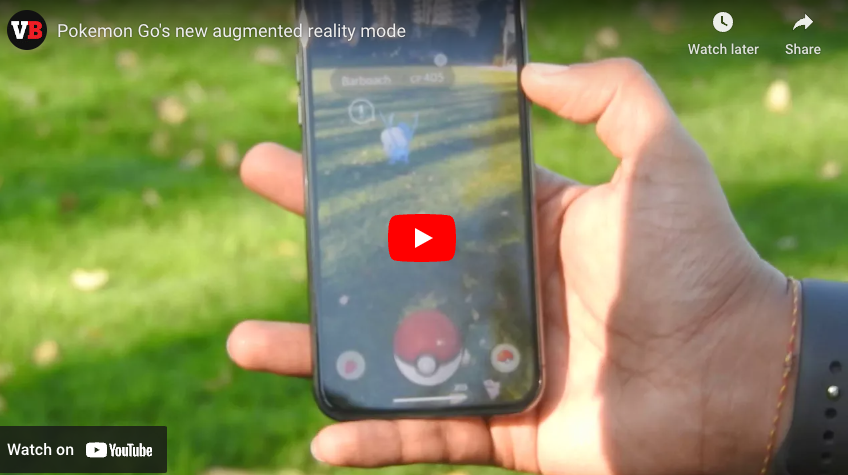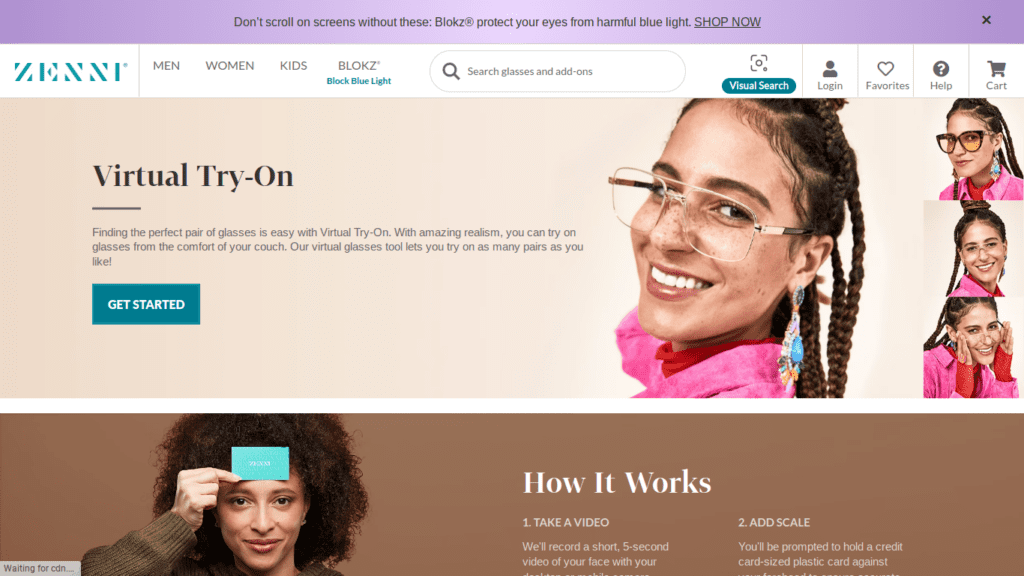The Future of SEO: Voice Search, Visual Search, and Augmented Reality

Search engine optimization is one of those fields that’s ever-evolving.
Search trends change. Technology evolves and advances. The competition gets stiffer. So, search engine algorithms must adapt to keep up.
That’s why relatively new trends are cropping up, like voice search, visual search, and augmented reality.
This is the future of SEO. Marketers must take notice.
What’s Driving Emerging SEO Trends?
New advancements in technology and changes in user behavior are the top drivers of new SEO trends.
Optimizing for different search mediums is one key trend to pay attention to. Searching by text will likely remain the top way to get information online.
But thanks to evolving technology, there are other ways for users to find what they’re looking for.
Voice Search
As more people use voice assistants and smartphones that enable voice technology, voice search will become more prevalent. In 2023, 64% of Americans owned an Amazon Echo smart speaker. So, it’s safe to say that voice search is becoming more popular and more common every day.
Many users enjoy the convenience of doing a hands-free internet search while they carry out their day-to-day activities like driving, cooking, or shopping.
People are even making purchases using voice search technology. In fact, 43% of voice-enabled device owners use those devices to make purchases. And sales from voice search have topped $2 billion.
So, it stands without reason that businesses that don’t take advantage and optimize their content for voice search could risk losing their search engine rankings.
Visual Search
As an internet user, you’ve likely conducted a standard image search before. You typed in a keyword, filtered the search by images, and probably found what you were looking for.
But visual search is different. Let’s say you typed in “winter boots women.” Next, you see tons of images of winter boots. These images pop up because the alt text, captions, and metadata are similar to your keyword.
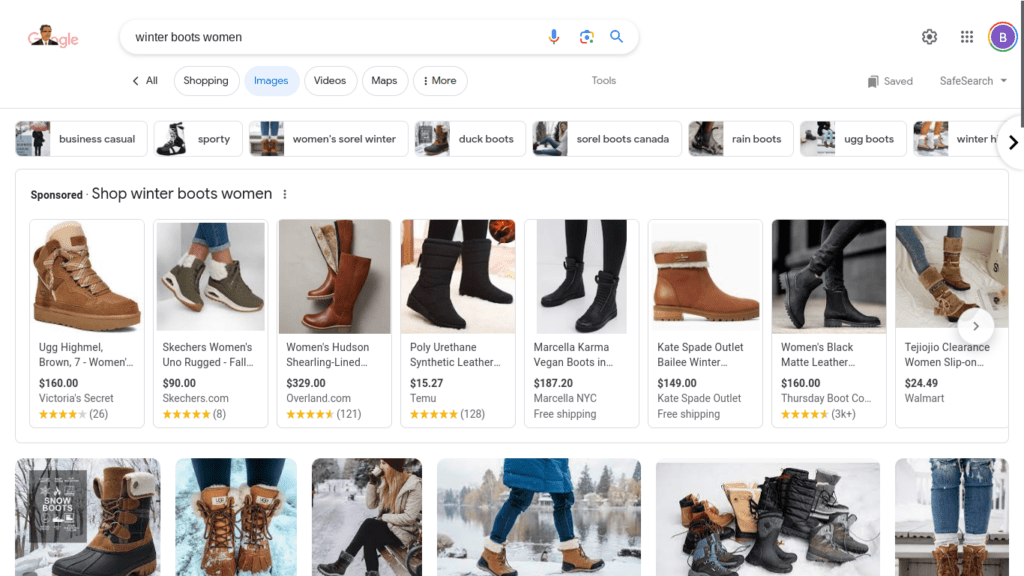
Screenshot by Britney Steele
But in a visual search, you scan the image of the boots, which allows you to see similar results.
You can see these similar results because computer vision and machine learning can identify similar images to the ones you scanned.
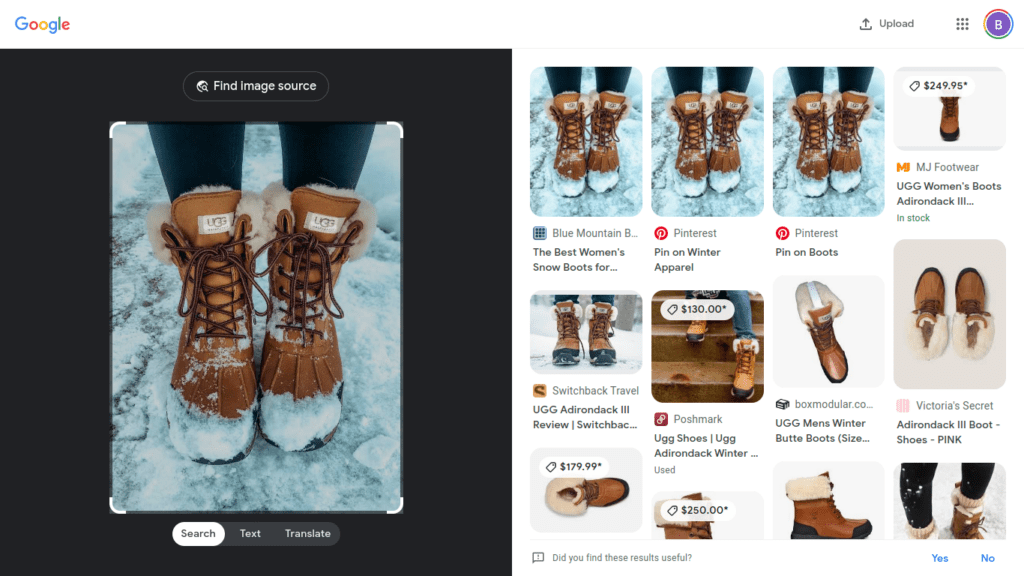
Screenshot by Britney Steele
This technology can recognize a variety of colors, shapes, sizes, and patterns, similar to the way the human mind does.
Users can also search the world around them with their camera. They can take a picture of something with their smartphone and get results of similar images.
This cutting-edge technology allows internet users to search for information and ask questions with fewer words — or, in this case, no words.
So, in a nutshell, conducting a visual search involves querying a search engine with a photo rather than with text.
Even though the technology surrounding visual search is still limited, it’s becoming more popular among internet users. According to Google, 12 billion Google Lens searches take place each month.
Augmented Reality
The popularity of augmented reality (AR) has exploded recently. Not to be confused with virtual reality, augmented reality involves using technology to create realistic and virtual environments.
In other words, AR enhances the physical environment by using computer-generated perceptual information. Simply put, AR overlays digital material on real-world objects.
How? Through special software, mobile applications, and hardware such as AR glasses.
AR is different from virtual reality in that AR incorporates real-world surroundings. Virtual reality doesn’t.
AR applications include games like Pokemon Go or face filters on social media platforms like Instagram, TikTok, or Snapchat.
But what does this have to do with the future of SEO?
Well, it begins with people’s fascination with technology. People love the idea of combining their real environment with digital elements. It’s fun. It’s a novel phenomenon. And it creates a wow factor.
One study even estimates there’ll be about 1.7 billion mobile AR users worldwide this year.
So, it makes sense to combine SEO with augmented reality to improve the user experience and engage audiences.
Businesses can increase their chances of ranking higher in the search engine results pages (SERPs) by showing AR-based content via visual search.
Here’s what the future may hold for AR and SEO:
- More searchers will use augmented reality services to find businesses and read online reviews.
- People can use augmented reality apps to learn more about businesses, which means local SEO will become more important.
- Brands will implement AR on their websites to create more immersive website experiences.
- Social media platforms will create more opportunities for users to interact with AR technology, allowing them to completely immerse themselves in what’s happening on their screen.
How to Adapt to the Future of SEO: 5 Strategies to Ensure Your Website Continues to Rank in Search
So, now that you know what’s in store for SEO’s future, let’s look at some actionable ways you can stay ahead of the competition.
1. Continue to Improve Your Local SEO Strategy
Chances are, you’ve already implemented many local SEO practices to help your business rank in local search.
AR allows internet users to scan a code via their mobile device and get all the information they need about your business. Using apps like Wikitude or Yelp, you can provide an even better user experience with AR.
For example, you can provide special offers to users close to your business’s location.
Voice search also affects local rankings. People often use voice search to find information about local businesses. When driving or walking, it’s easier to do a hands-free search query using a voice assistant on their smartphone.
So, make sure your business information is updated in local listings to take advantage of the popularity of AR and voice search queries.
Your business should also be on popular directory platforms available to daily users, including a Google Business profile (formerly Google My Business) and Yelp.
Why? Creating and optimizing profiles on these platforms is the top factor in local pack SEO rankings.
2. Implement Schema Markup and Metadata
While visual search uses machine learning and computer vision to find related images, it still uses schema markup and metadata.
Optimizing your images can help visual search technology easily find and recognize them.
- Add descriptive alt text to images. Help search engines understand the context of your image. This will help the image show up in relevant searches.
- Optimize your images for mobile. Many, if not most, people conduct visual searches using their smartphones. So, make sure your images show up well on smaller screens and that they load quickly on mobile devices.
- Incorporate keywords in the image title, caption, and description. Use relevant keywords in the title, caption, and description of your images. Not only does this help search engines understand what the image is showing, but it also helps users locate what they’re looking for.
- Submit your images to an image sitemap. Use an image sitemap to list the images on your website. This helps search engines discover and index your images.
- Use schema markup for images. Structured data provides context and makes it easier for search engines to understand your content. Use this data to provide more information about your products or services, including the product type, price, and availability.
- Post high-quality images on your site using an appropriate file size and type. Images that don’t render well have a lower chance of appearing in search results.
3. Target Question Keywords and Long-Tail Keywords
When people conduct searches using voice search technology, they tend to speak naturally, similar to the way they’d speak to another person.
So, these search queries are often longer, more specific, and are more likely to be complete questions.
It’s best to target more conversational queries and long-tail keywords to optimize your website content for voice search. For example, question keywords that include “who,” “what,” “when,” “where,” or “how.”
Incorporate these keyword phrases into the copy on your web pages and blogs. You can also create a FAQ section after every blog or a FAQ page dedicated to helping your target audience get the information they need about your industry, business, or product.
Use a keyword research tool to help you find long-tail keywords. Or take inspiration from Google with its “related searches” or “people also ask” sections of the SERPs.
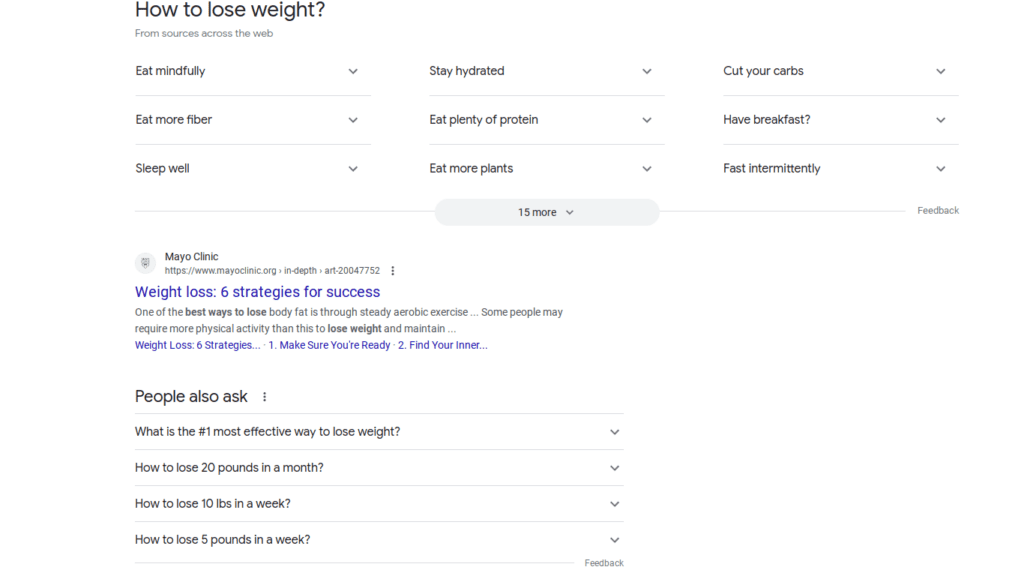
Screenshot by Britney Steele
Google’s “People also ask” feature provides several suggestions related to the keyword “What is the best way to lose weight.”
To make the most of this feature, search for your business or product/service and see what Google recommends.
It’s often less difficult to rank for these long-tail keywords because they tend to attract high search intent traffic as users are more specific in their queries.
For example, instead of “spas near me,” a user might search “spas in the Greater Chicago area.”
4. Improve Your Website User Experience With Virtual Try-On Capabilities
Retailers are leveraging AR to enhance the customer experience, allowing customers to try on products virtually before they buy them.
Almost half of shoppers would pay more for an item if they could try it out via AR. And 70% of people agree that AR encourages them to shop more often.
So, why not leverage AR for SEO?
Sure, 3D and AR may not be ranking factors for Google’s quality score. However, having these tools can improve website UX, which Google’s crawlers consider when indexing and ranking web pages.
Plus, Google’s spiders can crawl content on a brand’s website that promotes virtual try-ons or views in AR capabilities.
Some shoppers may not want to go into a store and try on a product, so search engines will rank websites implementing this technology.
Zenni Optical’s virtual try-on feature allows shoppers to find the perfect pair of glasses from the comfort of their own homes.
Here are some tips for leveraging AR for SEO:
- Create high-quality product images via 3D/AR. Again, 3D and augmented reality features aren’t directly tied to SEO. But high-quality images that boost UX are. Using AR to create high-resolution images of your products. Make your images the right size to improve page speed and performance.
- Include AR and virtual try-on keywords on your website. Metadata does have a direct impact on SEO. In your image titles and alt text, you can include keywords that people may use when they want to virtually try on products. “Virtual fitting room,” “try before you buy,” “AR fashion try-on,” or “virtual product trial” are a few examples of keywords to incorporate on your product pages, blog posts, and image alt text.
- Optimize CTAs to encourage AR discovery. Make it known that your brand offers virtual try-on capabilities with your calls-to-actions (CTAs). People interact with 3D experiences on product pages, which can increase time on-page and boost conversions. These signals to Google that your website is providing value and creating meaningful experiences for visitors, which increases your chances of ranking higher in the SERPs.
5. Optimize Your Website for Mobile Users
You’ve probably heard it all before. To improve your SEO efforts, you must make your site mobile-friendly.
This advice isn’t in vain. Around 92% of internet users access the internet using a mobile phone.
So, if your website isn’t optimized for mobile, you could lose tons of traffic. Google likely won’t prioritize your web pages and posts, which means less visibility and traffic.
And if you are getting website traffic, your bounce rate could be high, which means a lot of your visitors are leaving your site without converting.
When talking about the future of search engines, more and more mobile users will continue to use their devices to conduct voice and visual searches and access AR-powered experiences.
Follow these tips to optimize your website for mobile and these specific use cases:
- Include location-specific keywords and phrases to capture voice search users looking for nearby businesses or services.
- Structure your content to provide direct answers to increase your chances of being featured in voice search results (e.g., Featured Snippets).
- Use mobile-friendly image formats to ensure fast loading times for visual content on mobile devices.
- Optimize your website for mobile AR experiences.
- Incorporate interactive AR demos that allow users to visualize products or experiences using their mobile devices.
Wrapping Up
The future of SEO is already approaching. The only caveat is that the technologies driving this future haven’t reached their full potential (like Google’s AI).
But optimizing your website for these new trends is mission-critical if you want to get ahead of the competition.
Voice search, visual search, and augmented reality probably won’t be replacing text-based search any time soon. But they certainly will give it a run for its money.
That’s why all marketing pros and business owners should be taking advantage of these SEO strategies to boost search visibility, search rankings, and organic traffic.


